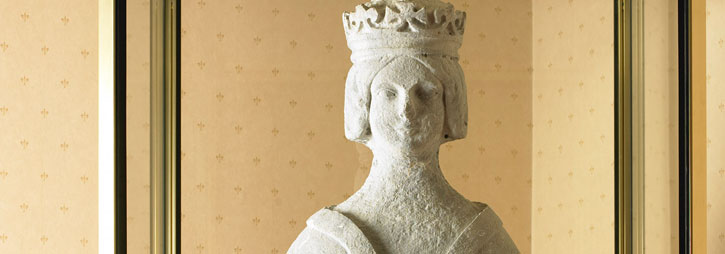UCC historians contribute to HM Queen Elizabeth II's visit to Cork

UCC historians contribute to HM Queen Elizabeth II's visit to Cork
Historians from the School of History made their contributions to the Queen’s visit to Cork. Dr Andrew McCarthy commentated for RTÉ on the Grand Parade. John A. Murphy, emeritus professor, explained the intriguing story of Queen Victoria's statute to the royal party at UCC's Tyndall Institute. John A. Murphy is author of the official history of the university The College: A History of Queen's University College Cork.
The four-day state visit of HM Queen Elizabeth II and HRH Prince Philip, The Duke of Edinburgh, is the first visit by a British monarch to Ireland in one hundred years and the first since Irish independence in 1922. Speaking on the impact of the royal visit to RTÉ News, Prof. John A. Murphy reflected that this had been a momentous week in Irish history by marking an evolution in the Peace Process. “What it did was to bind relations between governments and peoples extremely well”, he concluded.
King George V was the last British sovereign to visit Ireland in July 1911. The Cork Examiner reported the royal party’s arrival as follows: ‘A cloudless sky, Dublin bay bathed in glorious sunshine, a flag-bedecked fleet lying at anchor in the scarce-rippled waters of the Irish Sea … the quay ablaze with welcoming throngs.’ That visit took place a mere two weeks after his coronation and concentrated on Dublin and Maynooth. The king was accompanied by Queen Mary, and his two eldest children, the Prince of Wales (later Edward VIII) and Mary, the Princess Royal. On that occasion, a thousand people made the journey from Cork to Dublin by train to witness the proceedings. In later years, George V fondly recalled his visits to Cork while serving as a midshipman in the Royal Navy. Despite growing tensions over the Home Rule question the visit passed off successfully. A lengthy letter about how a Home Rule parliament would work had been printed in The Cork Examiner only a week earlier. The 1911 royal visit was widely reported and photographed and was captured on newsreel film.
In 1903, King Edward VII and his wife Queen Alexandra visited the Cork Greater International Exhibition, which was held in present-day Fitzgerald's Park. Following the presentation of colours to the Royal Irish Regiment and the Royal Munster Fusiliers, King Edward and Queen Alexandra were taken in the royal carriage through Cork city to the Grand Concert Hall on the grounds of the exhibition. The Cork Examiner reported that 'The city was thronged with people not only from all parts of Munster, but thousands of strangers such as are usually found in the wake of Royalty were to be met with in the streets'. The couple had lunch in the Mansion House (now Cork Public Museum), were escorted through the exhibition by the Lord Mayor Edward Fitzgerald and the Lady Mayoress. The royal couple departed from Queenstown (now Cobh) aboard the royal yacht The Victoria and Albert. Following the visit Edward Fitzgerald was made a baronet of the United Kingdom and Abraham Sutton, the Sheriff of Cork, was knighted.
Queen Victoria visited Ireland four times during her 63-year reign. Her first official visit, in 1849, was specifically arranged by Lord Clarendon, the Lord Lieutenant of Ireland, to try to both draw attention from the famine and alert British politicians, through the queen’s presence, to the seriousness of the crisis in Ireland. The Royal Squadron arrived as night was falling, and correspondents described the harbour illuminated by fireworks and bonfires, as well as by blue lights strung along the yardarms of the ships. George Mounsey Atkinson responded with enthusiasm to the visit by producing several different paintings of the Royal Squadron arriving in Cork harbour and the landing of Queen Victoria and Prince Albert at Cobh, which was renamed Queenstown in honour of the occasion. Victoria knighted William Lyons, Cork’s first Catholic mayor, aboard the royal yacht in grateful appreciation of the welcome made to her by the citizens of Cork and Queenstown. In Cork, a procession of carriages took the royal party on a tour of the city. A triumphal arch had been erected on Grand Parade, and another in Great George's Street, in a Gothic style. The carriages continued on to the recently constructed Queens College (now University College Cork), where a statue of Queen Victoria, presented to the University by the architect Sir Thomas Deane, was ceremonially placed in position by him and the builder John Butler, as the Queen was passing. The Royal visit lasted only a matter of hours. Before evening, the Royal Squadron was steaming out of Cork harbour bound for Dublin.
Victoria’s visits to Ireland in 1853 and 1861 made Kerry and the lakes of Killarney popular tourist destinations. In 1853, Victoria attended the Great Industrial Exhibition in Dublin. More than one million people attended and Victoria knighted the architect of the exhibition, John Benson. Sir John Benson was appointed Surveyor of the County of the City of Cork (1851) and Engineer for the harbour and port of Cork. He held these two posts until his retirement because of ill health in 1873. His architectural legacy in Cork includes the classical revivalism of the Shandon Butter Market, most notably the Firkin Crane, and the English Market.
Queen Victoria’s final visit to Ireland, in April 1900, nine months before her death, conferred upon the mayor of Cork the title of Lord Mayor. An extract from the official royal statement carried in the Irish newspapers on April 25th 1900 read: “The Queen has been pleased to confer upon the mayor of Cork the title of Lord Mayor; and to direct that the said title shall be borne by his successors in that office.”
